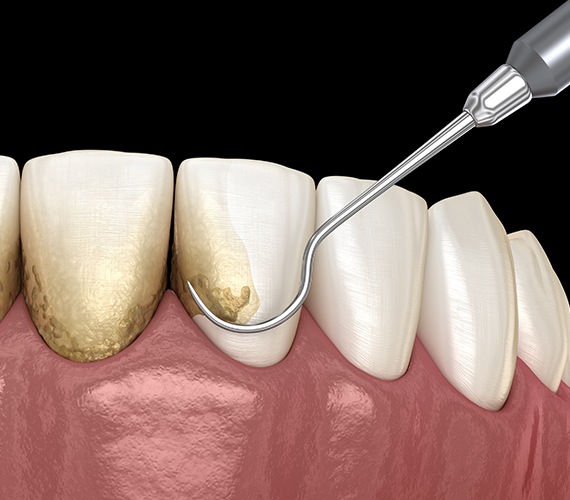Teeth cleaning (also known as prophylaxis, literally a preventive treatment of a disease) is a procedure for the removal of tartar (mineralized plaque) that may develop even with careful brushing and flossing, especially in areas that are difficult to reach in routine tooth brushing. It is often done by a dental hygienist. Professional cleaning includes tooth scaling and tooth polishing and debridement if too much tartar has accumulated. This involves the use of various instruments or devices to loosen and remove deposits from the teeth.
What is the procedure of teeth cleaning?
- Teeth and gum examination
Before beginning the cleaning process, the hygienist uses a small concave mirror to check the patient’s mouth for any signs of oral problems, such as inflamed gums, plaque, and tartar build-up, or dark spots on the teeth. This helps the hygienist know what to focus on during the cleaning. If more serious issues such as cavities or gum disease are found, the hygienist most often informs the dentist for a more thorough examination. - Scaling
Using a small hooked tool called a scaler, the hygienist removes any plaque and tartar from the surface of the teeth, near the gum line, and in between the teeth. Depending on how much build-up is present, either a manual or ultrasonic scaler is used. A manual scaler feels like scraping on the teeth while the ultrasonic scaler uses gentle vibration and water for removing large deposits. - Polishing and flossing
Next, the hygienist polishes the teeth and removes any stains using a handheld electric tool with a rubber prophy cup attached and a gritty toothpaste called prophylaxis paste. Patients can expect to feel a slow grinding motion on the teeth during this step in the process. The hygienist then flosses the patient’s teeth to remove any remaining plaque and paste. - Fluoride
Some dental offices include fluoride treatment in the teeth cleaning process. Often, patients can choose what flavour fluoride gel they like. This gel is then placed inside a mouthpiece that the patient must wear for approximately a minute.
What is the cost of the treatment?
Depending on patient’s habit, stain present on teeth and numbers of appointment, charges varies from 800 to 3k.
| OUR CLINICAL WORK – NON-SURGICAL THERAPY | |
| Before – 1 | After – 1 |



